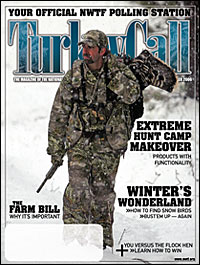.jpg)
If you’re like me, you haven’t shopped yet. While hunting down bargains is a sport for some, I don’t qualify. I’m pretty tough to buy for too. Let’s just say I don’t want or need much these days outside of my health, my free time, writing assignments to keep me financially stable, my family’s love, and my always-at-my-side bird dogs.
Okay, and maybe a few good books in an unread stack (note: this blog won't permit italicizing the following text titles) . . .
GOOD BOOKS
I read a lot, and get review copies at this address: everything from nonfiction books on hunting dogs and angling to a range of magazines, and this newspaper. Even a well-placed cereal box might get my attention. Here are some titles I’ve read this year (some have been out awhile, while some are new), and others I can recommend. Books, after all, contain frozen moments in time, and we can return there at will if the material sustains our interest.
On the Run: An Angler’s Journey Down the Striper Coast by David DiBenedetto (Perennial Currents, 238 pp., $12.95 pbk.). You Seacoast anglers will recognize some of the places and people here, as the author follows the fall’s striper run from Maine to North Carolina. I read the book straight through, it’s that good. Check out his website at: www.stripersontherun.com/
The Compleat Crabber by Christopher R. Reaske (Burford Books, 128 pp., $12.95 pbk.). This slim, energetic work beams with enthusiasm, natural history, offbeat crabbing trivia, and how-to methods for securing these tasty treats. While the book concentrates on blue crabs (more of a southern New England/Cape Cod fare than our north Atlantic red-crab waters), it’s an interesting, unique read.
Black’s 2007 Wing & Clay Waterfowl (Grand View Media Group, Inc., 496 pp., $17.95). Written for the shotgunner, this super annual jams so much information on equipment, instructional text, and destinations between the pages you’ll spend the next year just leafing through it before the ’08 edition arrives.
Mammals of North America by Fiona A. Reid (Houghton Mifflin, 579 pp., $20.00 pbk.). A new fourth edition in the Peterson Field Guide Series, this title covers all mammals found in North America (north of Mexico). Reid is both the author and illustrator of the handy text. It can provide a nice companion to Mammal Tracks & Sign by Mark Elbroch (Stackpole Books, 778 pp., $44.95 pbk.). Elbroch’s masterpiece is visually gorgeous, with color photos and detailed text descriptions throughout (plus plenty of tracking enthusiasm shared along the way).
SHORT TAKES
Some are out-of-print, but available online and at antiquarian bookstores. Others remain on store bookshelves. Longtime favorites include:
Jenny Willow (Mike Gaddis), America's Greatest Gamebird: Archibald Rutledge's Turkey-Hunting Tales (Jim Casada Editor), Gun Dogs & Bird Guns (Charles Waterman), The Shape of the Journey (Jim Harrison), Querencia (Stephen Bodio) Illumination in the Flatwoods (Joe Hutto), Making Game (Guy de la Valdene), Bird Dog (Ben O. Williams), and A Rough-Shooting Dog (Charles Fergus). Want flyfishing? Try John Gierach's complete work, and James R. Babb’s three books.
Lawrence Sargent Hall's "The Ledge" (a sea-ducking tragedy that encompasses the range of human emotions) is the greatest work of short fiction in the English language. Read it if you haven't.
HOWLETT’S PICKS
I asked my buddy Doug Howlett, the Outdoor Life magazine editor, what he’s been reading lately at 35,000 ft. (he just hunted Mississippi whitetails), and he weighed in with a couple interesting titles:
Deep Enough for Ivorybills by James Kilgo (University of Georgia Press. 193 pp., copies available from online sellers). This classic includes hunting in the Southern rivers swamps and woods.
No Country for Old Men by Cormac McCarthy (Knopf, 320 pp., online/bookseller prices vary). Publishers Weekly called this book “a mesmerizing modern-day western.” According to Doug, and the brief plot account I read, the novel involves Llewelyn Moss, an antelope hunter who finds several dead men near the Rio Grande in southwest Texas (it’s set in 1980), along with a pile of heroin and millions in cash. Not your typical hunting tale, eh. Such a premise begs the question: “What would you do?”
You can check out Doug’s writing at his “The Strut Zone” blog (www.outdoorlife.blogs.com/strutzone/ ), and in the pages of the print magazine.
GOT GUNS?
In my faraway childhood, kids in my rural town yearned for a BB gun under the Christmas tree, and I remember that holiday as a defining moment. Some big boys (and girls) carry that interest into adulthood—likely you, if you’re reading this.
Recent statistics reveal firearm and hunting gear sales topped $3.3 billion in 2005. Only golf and exercise equipment performed better [yawn], with sales of $3.4 and $5.2 billion, according National Sporting Goods Association data.
Shotgun sales increased by 10.5 percent for a total of $667.9 million, handgun sales rose 8.5 percent to $630.7 million, and rifle sales were up 2.7 percent to $849.2 million.
Footwear rules too. In this retail category, hunting footwear sales saw a 7 percent increase and sales of hunting-related apparel saw a 4 percent gain.
--Steve Hickoff
.jpg)

:Hickoff+photo.jpg)
.jpg)
.jpg)





